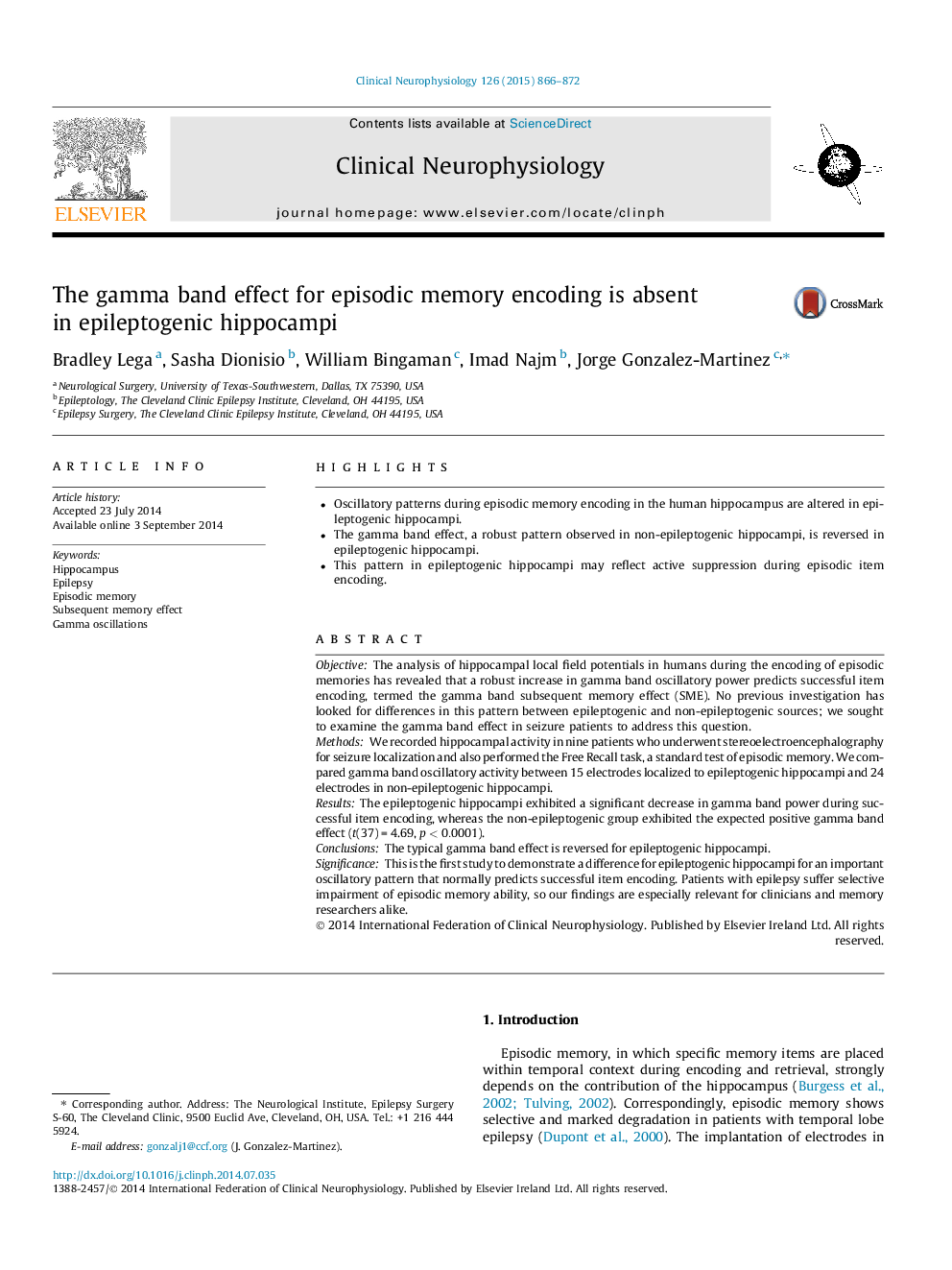| Article ID | Journal | Published Year | Pages | File Type |
|---|---|---|---|---|
| 3042778 | Clinical Neurophysiology | 2015 | 7 Pages |
•Oscillatory patterns during episodic memory encoding in the human hippocampus are altered in epileptogenic hippocampi.•The gamma band effect, a robust pattern observed in non-epileptogenic hippocampi, is reversed in epileptogenic hippocampi.•This pattern in epileptogenic hippocampi may reflect active suppression during episodic item encoding.
ObjectiveThe analysis of hippocampal local field potentials in humans during the encoding of episodic memories has revealed that a robust increase in gamma band oscillatory power predicts successful item encoding, termed the gamma band subsequent memory effect (SME). No previous investigation has looked for differences in this pattern between epileptogenic and non-epileptogenic sources; we sought to examine the gamma band effect in seizure patients to address this question.MethodsWe recorded hippocampal activity in nine patients who underwent stereoelectroencephalography for seizure localization and also performed the Free Recall task, a standard test of episodic memory. We compared gamma band oscillatory activity between 15 electrodes localized to epileptogenic hippocampi and 24 electrodes in non-epileptogenic hippocampi.ResultsThe epileptogenic hippocampi exhibited a significant decrease in gamma band power during successful item encoding, whereas the non-epileptogenic group exhibited the expected positive gamma band effect (t(37) = 4.69, p<0.0001p<0.0001).ConclusionsThe typical gamma band effect is reversed for epileptogenic hippocampi.SignificanceThis is the first study to demonstrate a difference for epileptogenic hippocampi for an important oscillatory pattern that normally predicts successful item encoding. Patients with epilepsy suffer selective impairment of episodic memory ability, so our findings are especially relevant for clinicians and memory researchers alike.
